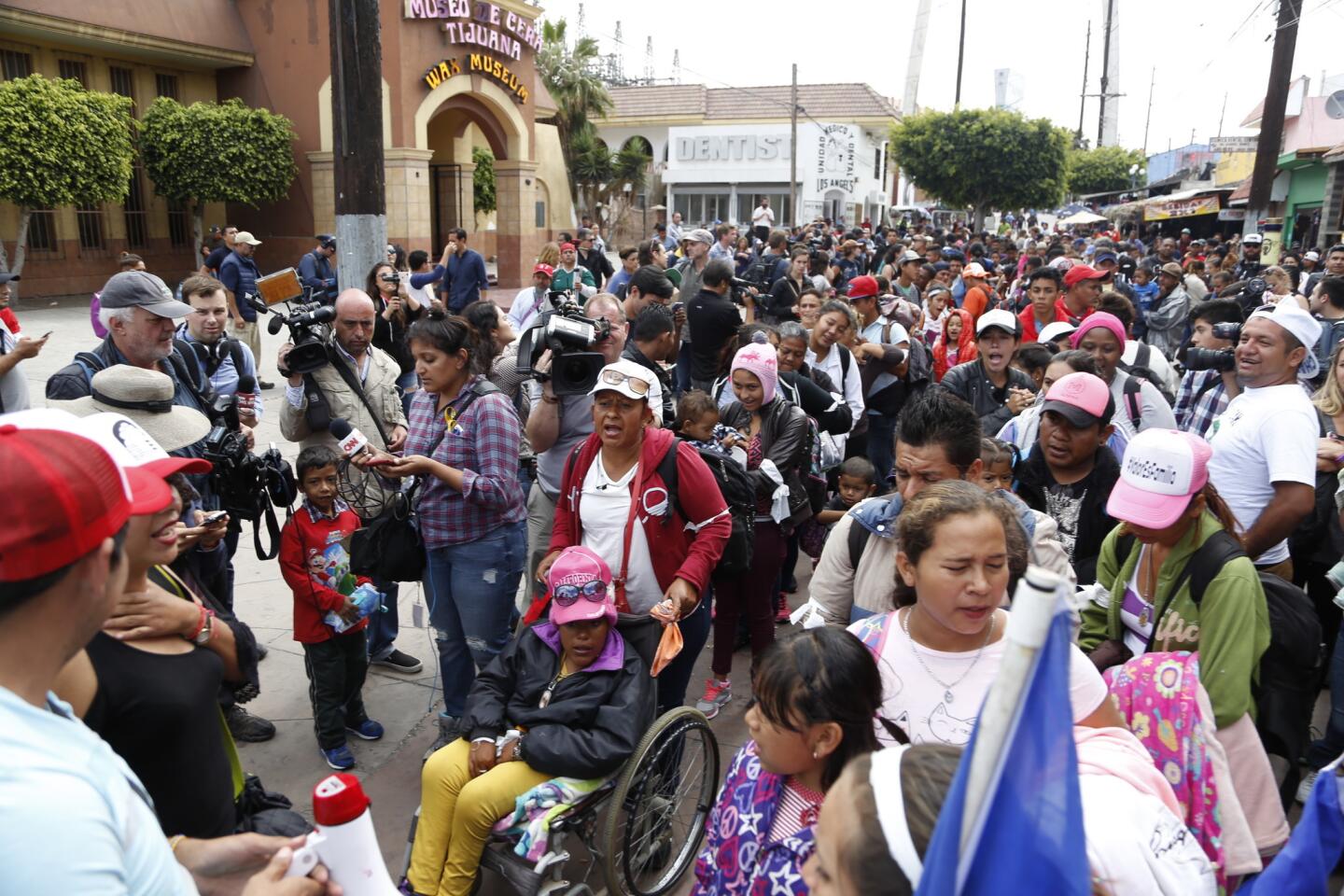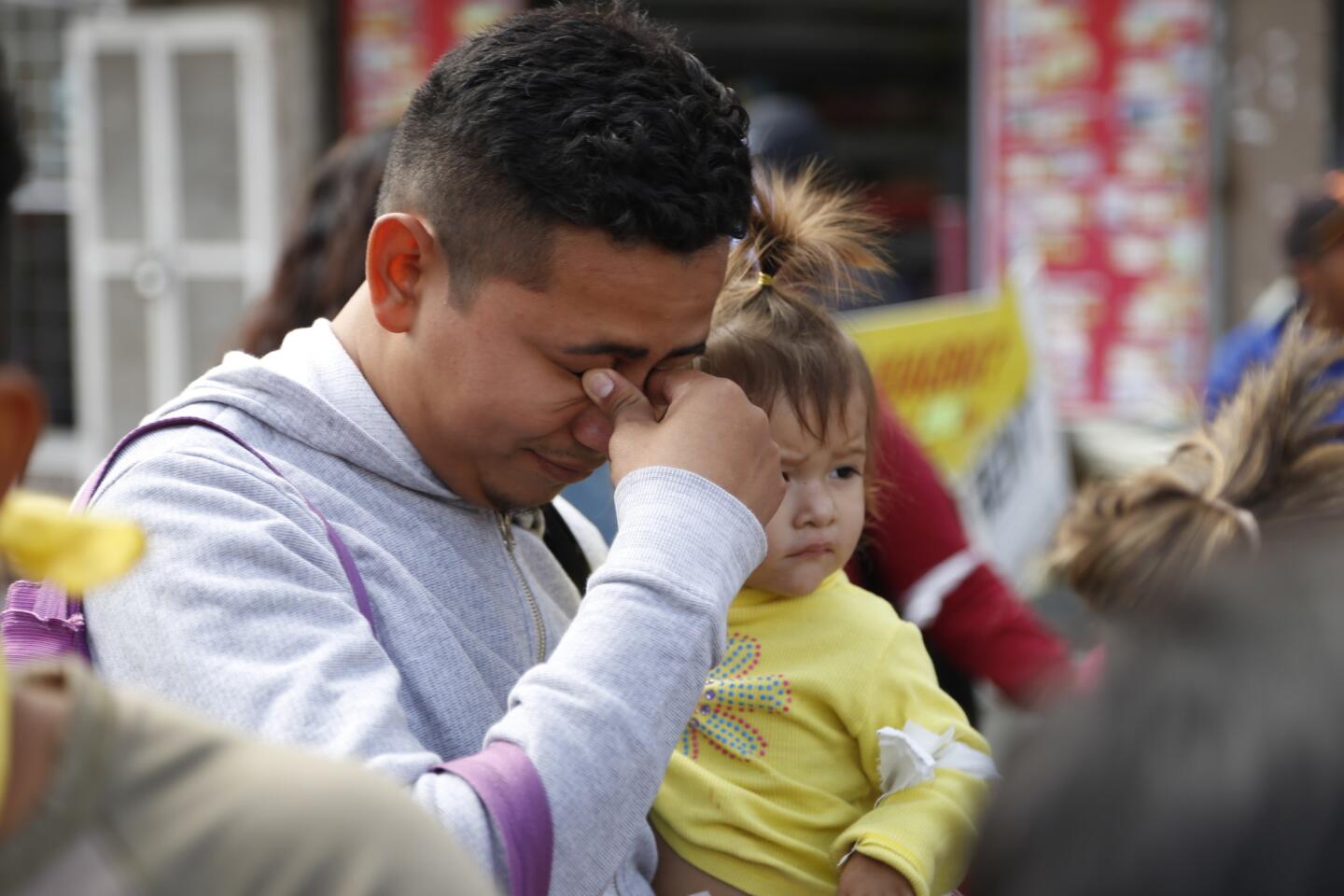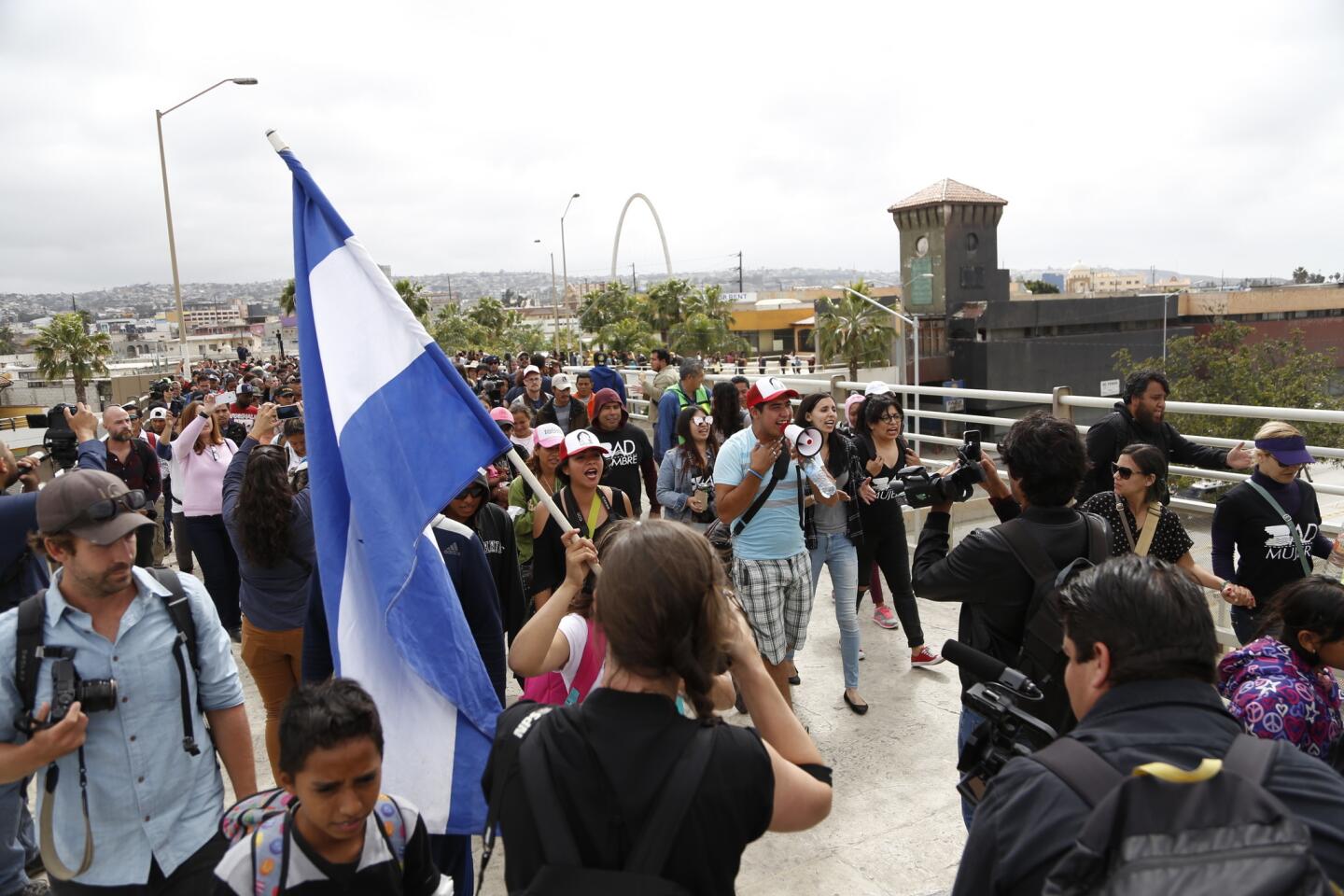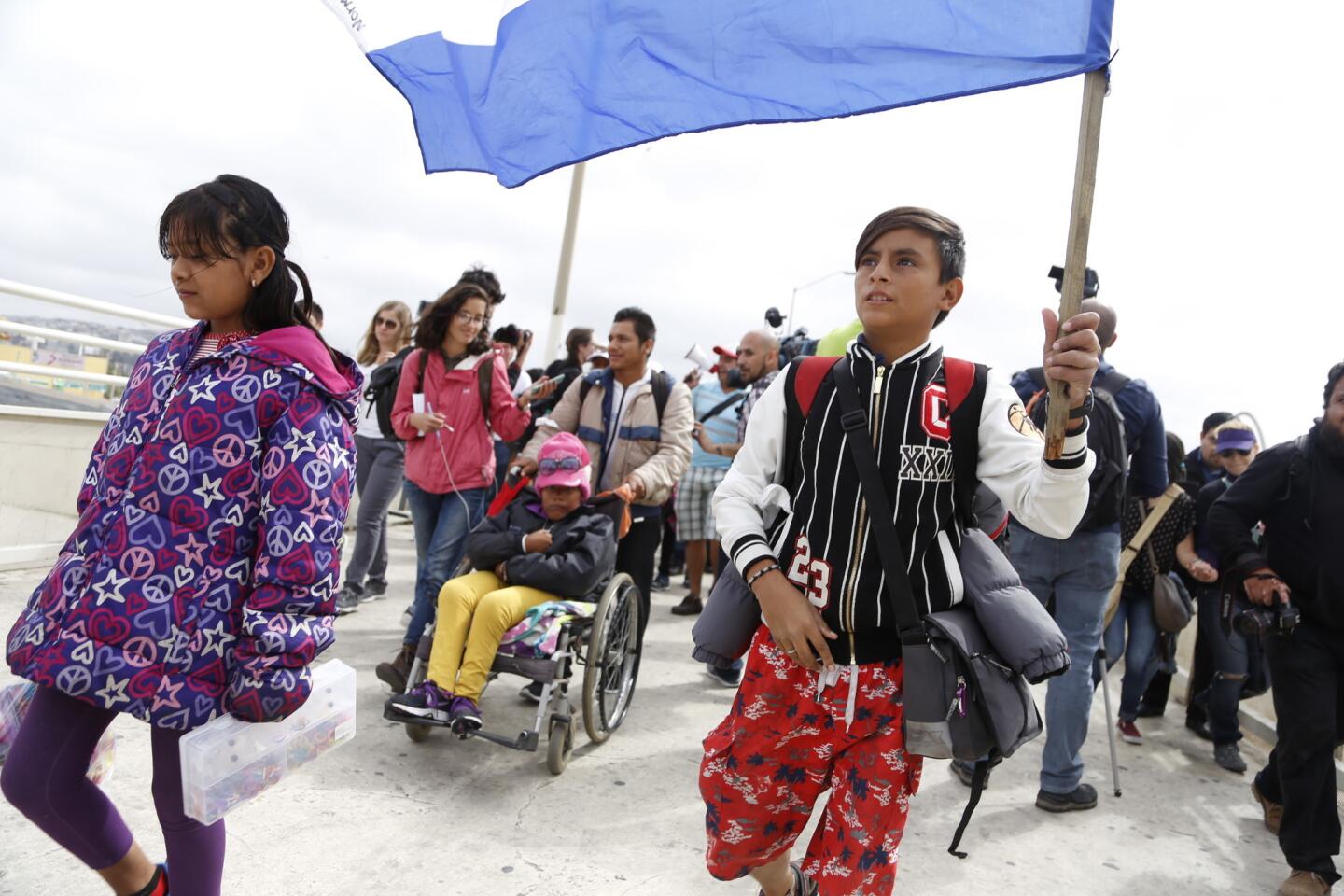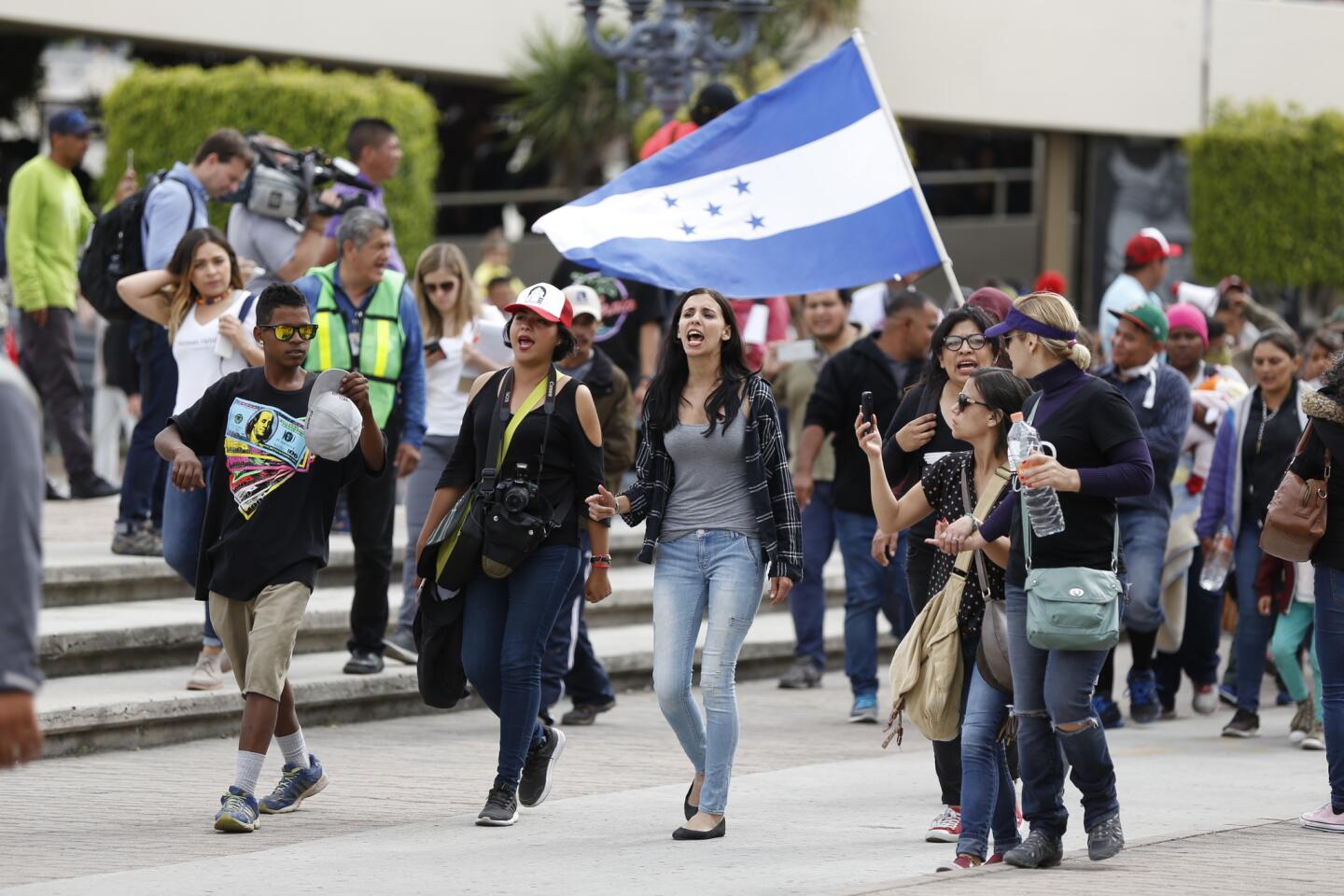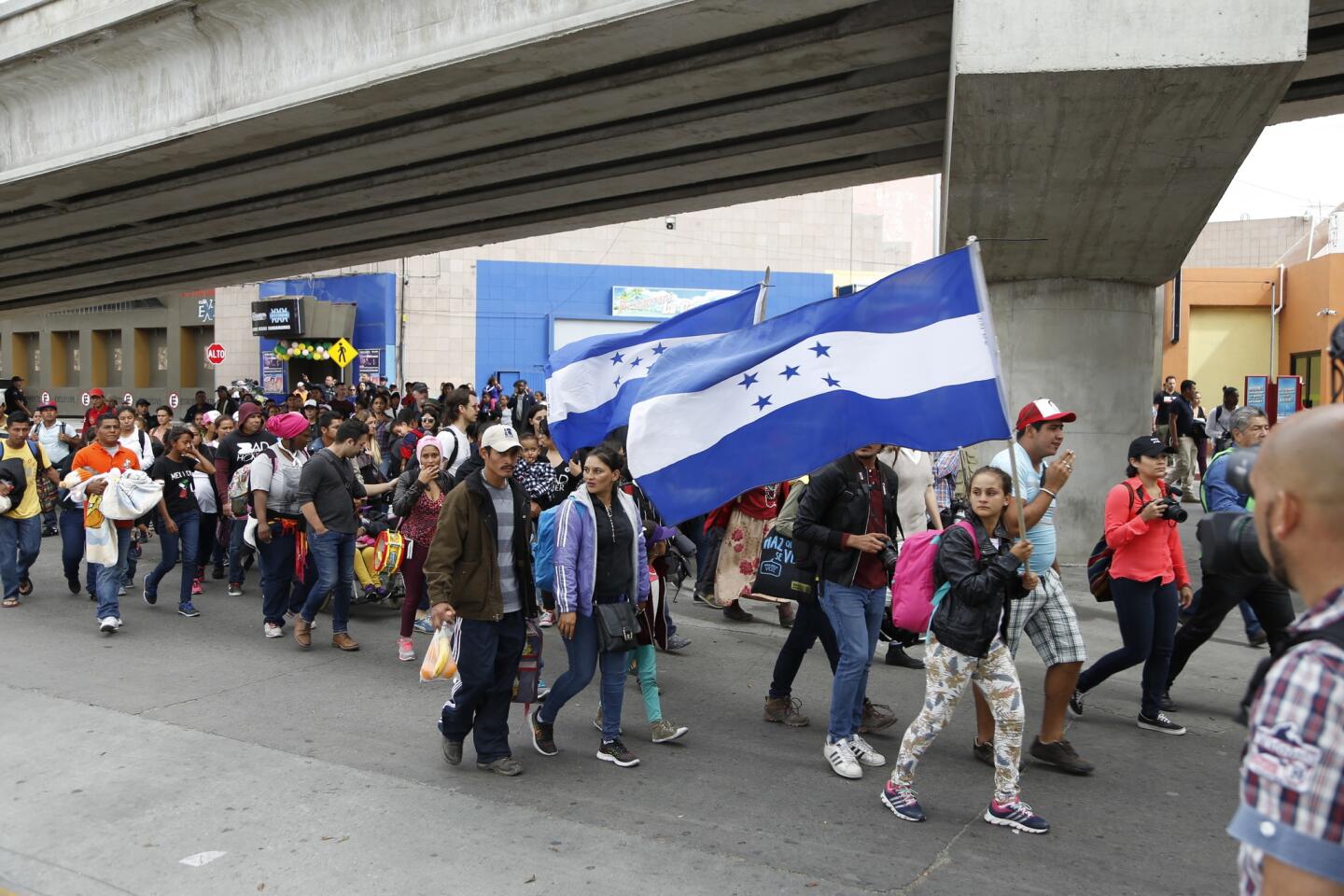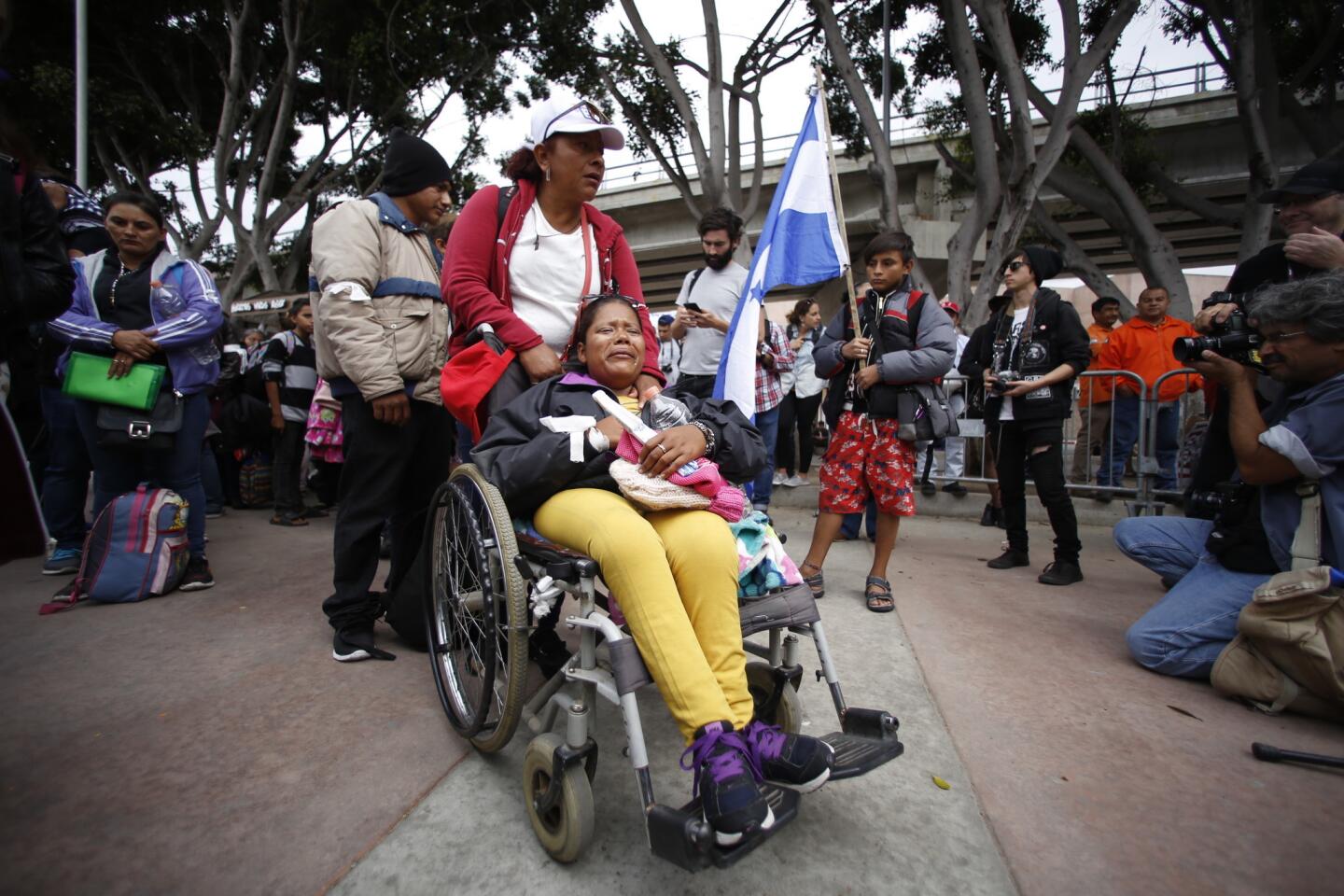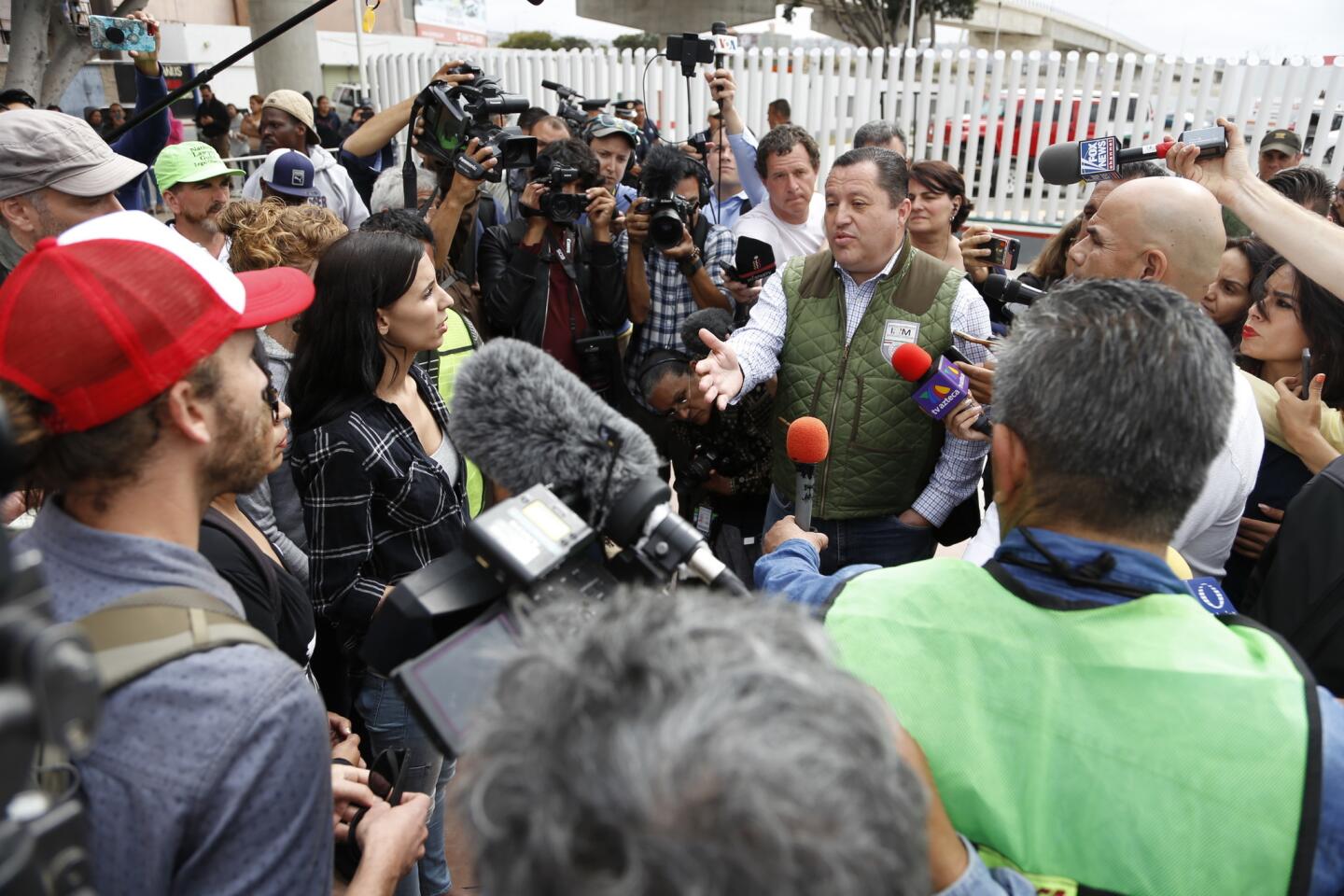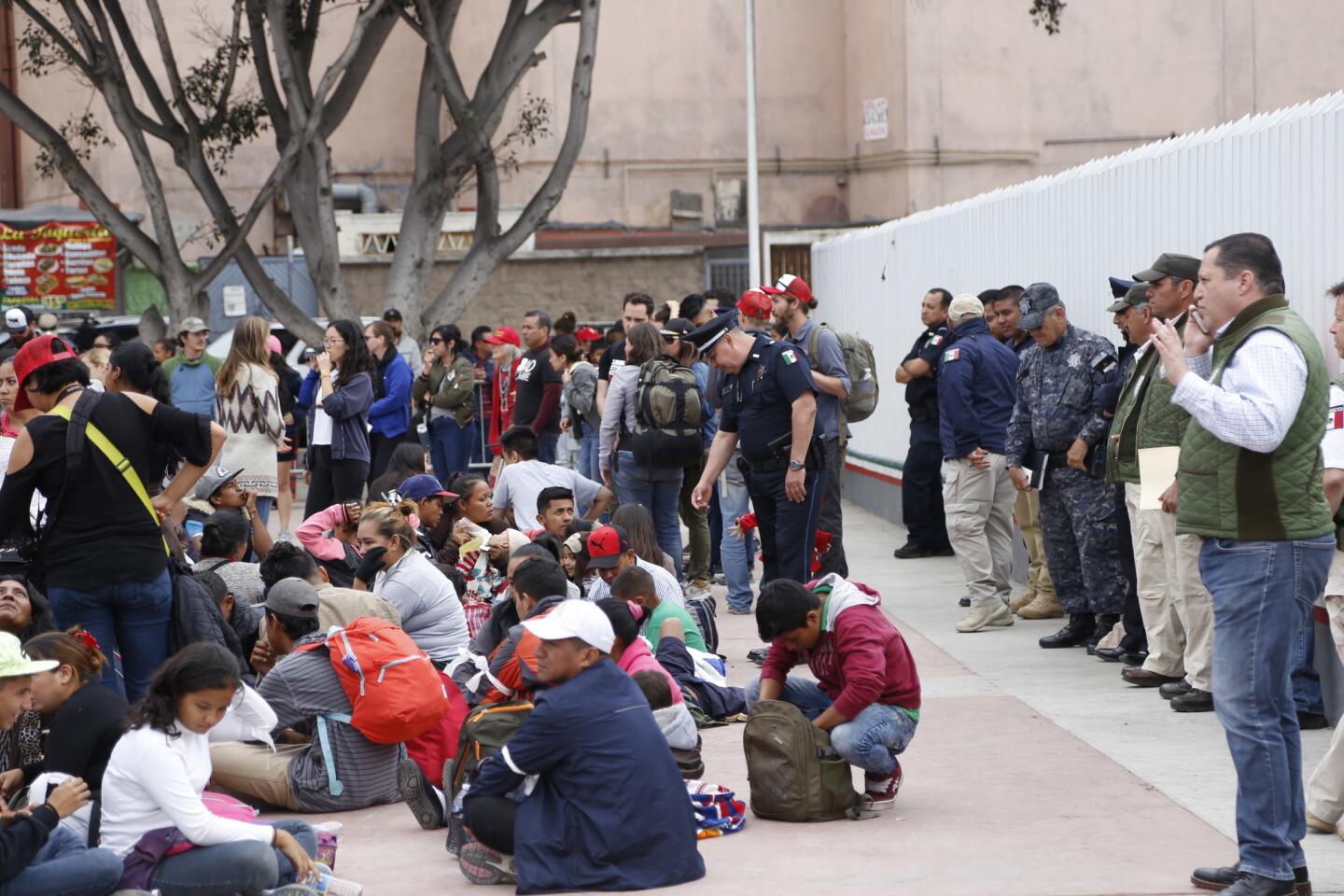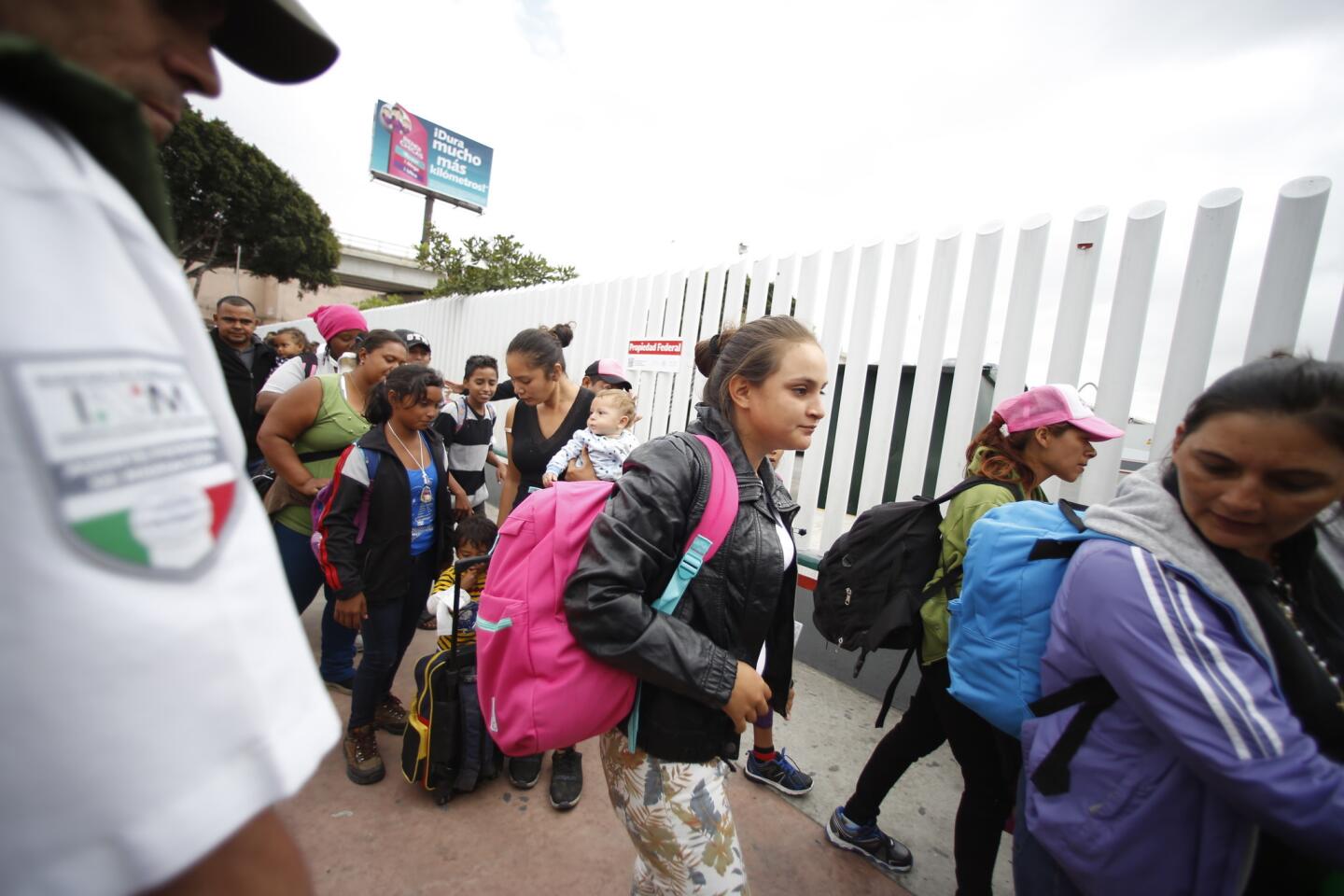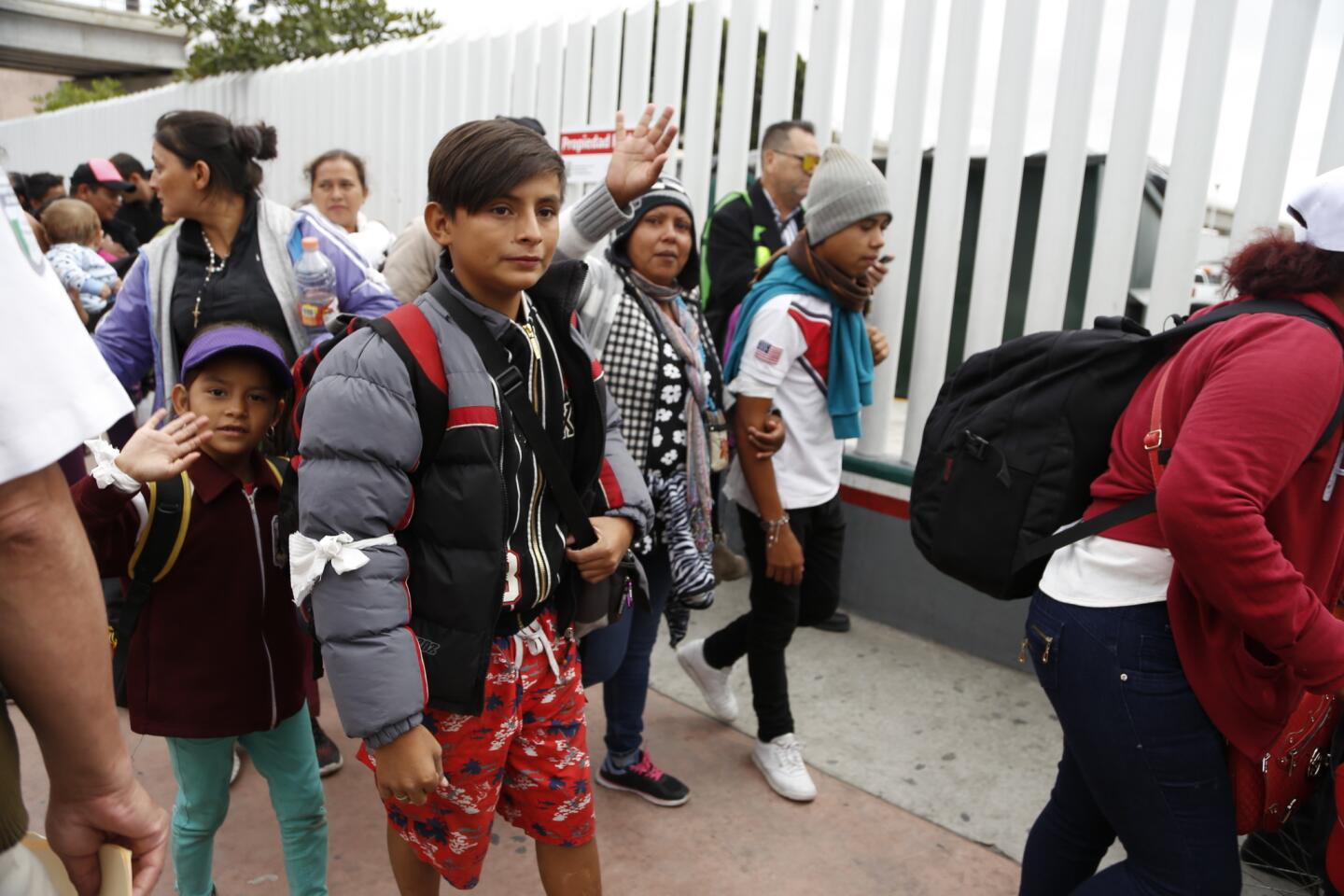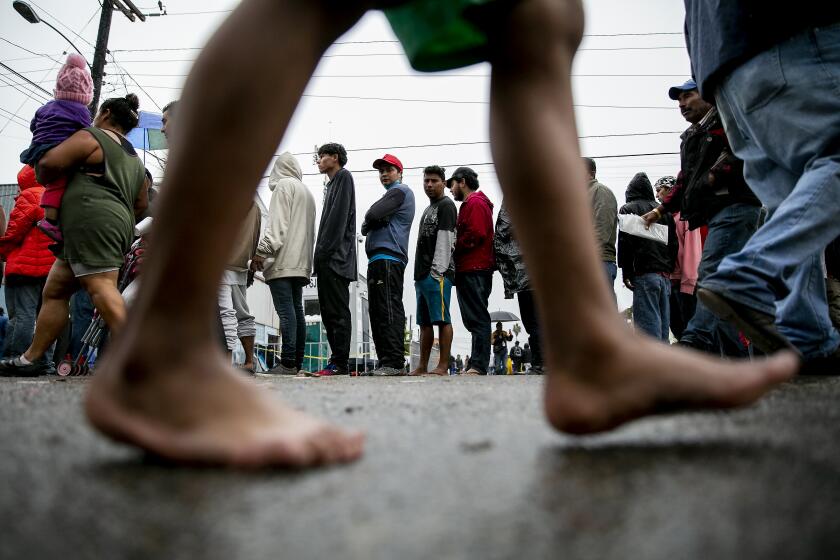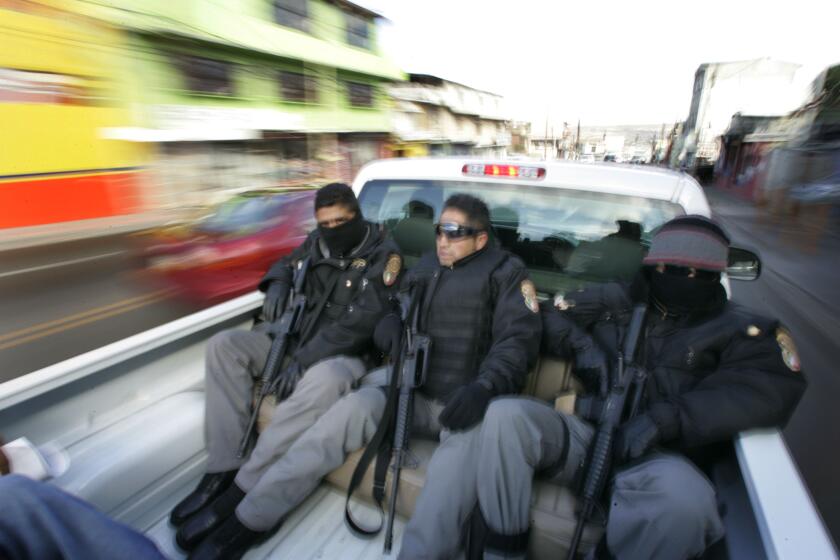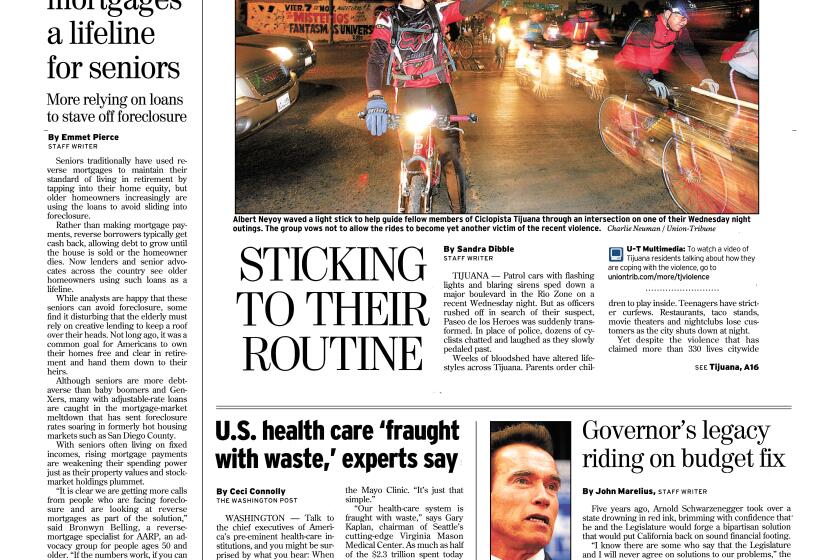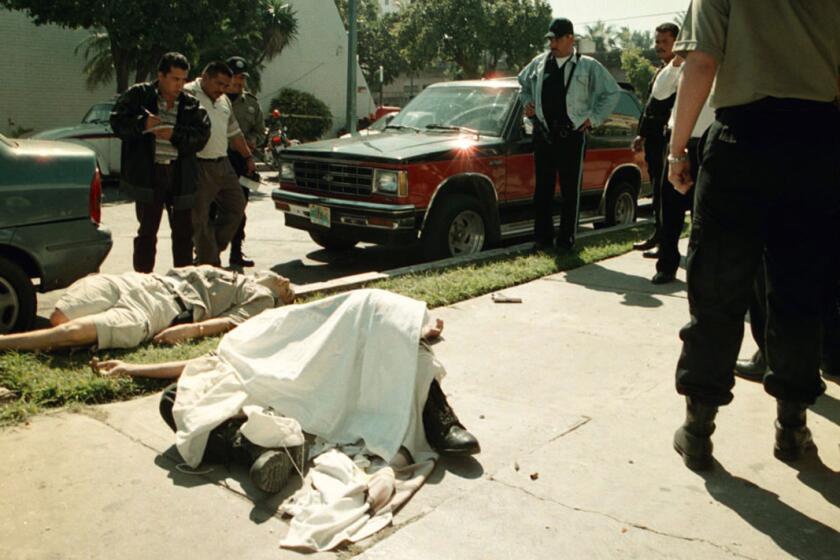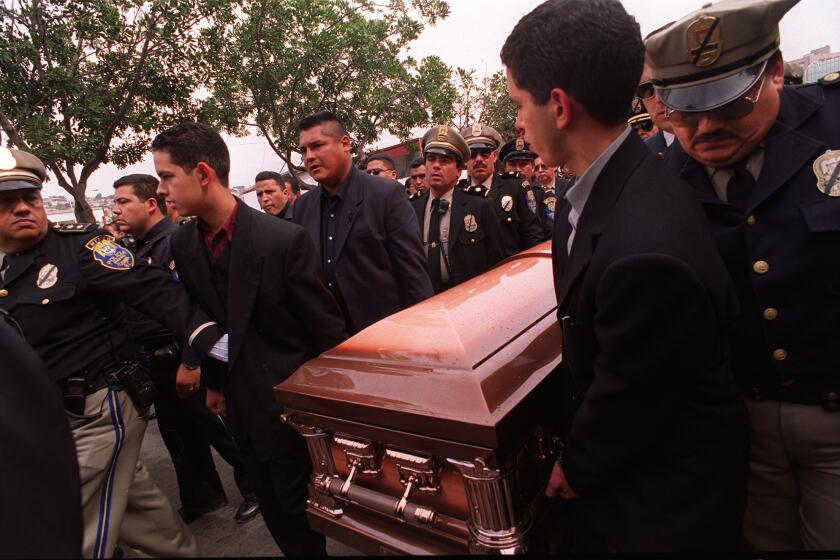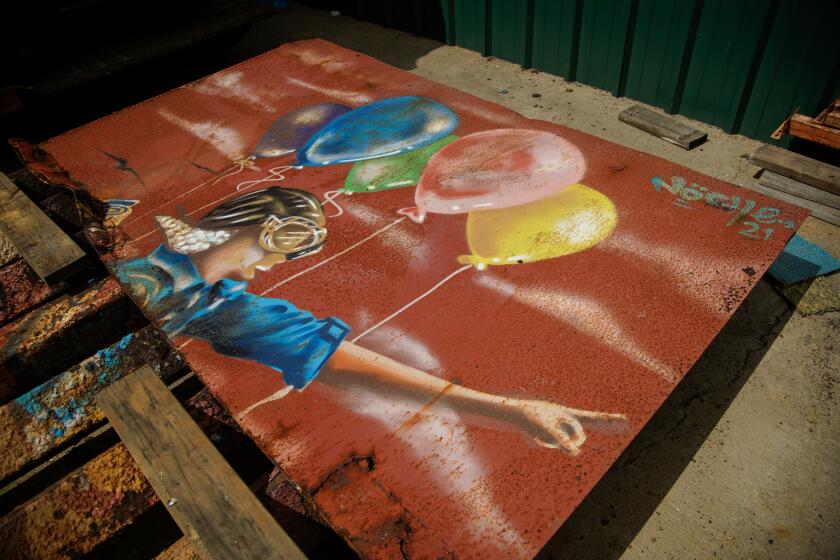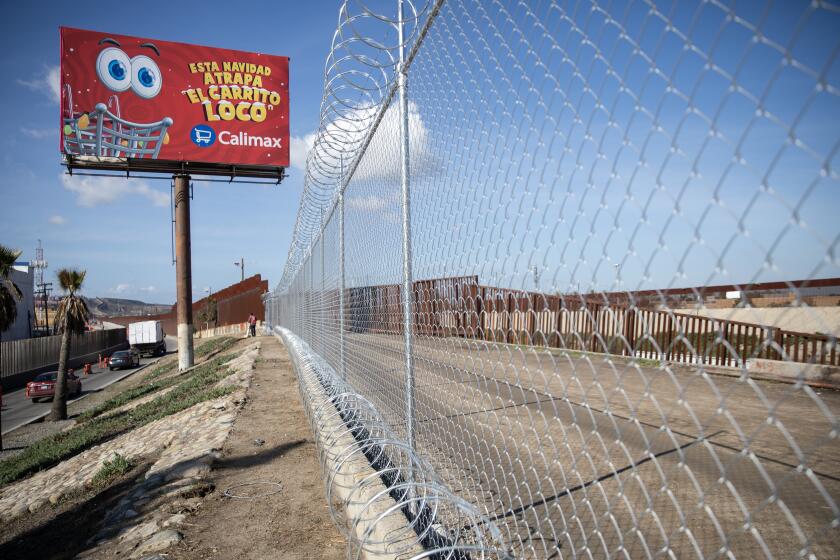Uncertainty greets Central American asylum seekers as officials say San Ysidro Port of Entry already at capacity
After 35 days of traveling through Mexico, a group of Central American migrants prepared to cross to the United States on Sunday and request asylum. But one thing quickly became clear: As one leg of their journey had concluded, a new struggle was just beginning.
While some 200 members of the Pueblo Sin Fronteras Caravan went over final details of their asylum petitions in Tijuana, U.S authorities announced Sunday afternoon that they had “reached capacity” at the San Ysidro Port of Entry for processing persons “without appropriate entry documentation” — a status that would apply to all caravan members.
Kevin McAleenan, Commissioner of U.S. Customs and Border Protection, said in a statement that “depending upon port circumstances at the time of arrival, those individuals may need to wait in Mexico as CBP officers work to process those already within our facilities.”
As they made their way across Mexico, the caravan’s members have come under a spotlight in recent weeks following a series of tweets by President Trump, who invoked the North American Free Trade Agreement and the Deferred Action for Childhood Arrivals Program as he accused Mexico of doing nothing to stop their journey to the border.
Undeterred by the president and the CBP announcement, the first group of 50 Caravan members walked into the port’s PedWest entrance at about 4:30 p.m. on Sunday, waving farewell, as activists and fellow caravan members cheered them on. Most were women and children.
But several hours later, members of the group had yet to enter the U.S. facility for processing.
The Central Americans would not be the first group to be forced to wait in Mexico. When thousands of Haitians sought entry at San Ysidro in 2016, CBP worked with Mexican officials to accept limited numbers each day so as not to overwhelm the port’s processing capacity.
CBP officials in recent days have said that the agency has the capacity to detain as many as 300 people at the San Ysidro Port of Entry. A representative of Amnesty International observing the process, Madeleine Penman, said “if the U.S. government decides not to receive these people who are presenting themselves today, they would really be violating their own laws and international law.”
As uncertainty grew over what would happen to the Caravan’s asylum petitioners, the mood on Sunday evening contrasted sharply with a boisterous gathering earlier the day as caravan members and supporters gathered by the Pacific Ocean on both sides of the international border fence.
The morning crowd grew to several hundred, with participants waving Honduran flags, calling out chants, carrying bouquets of yellow flowers, with some of the younger members climbing to the top of the tall metal bollards. “Stop Donald Trump and his politics of fear,” went one chant.
Others sat quietly, clutching infants, wondering what awaited them in U.S. custody. “We’re not here for entertainment, we cannot live in our country, we are just people like everyone else,” said Katerine Enamorado, of San Pedro Sula, Honduras, holding her one-year-old daughter Ashley Abigail.
Reina Isabel Rodriguez, 52, had traveled from El Salvador with her two grandchildren and was also among those determined to cross. “I fear that they will separate me from them,” she said.
By foot, bus and train, the caravan participants have been journeying through Mexico since leaving the southern border city of Tapachula on March 25 with the aim of reaching the Tijuana-San Diego border. Most are from Honduras, and tell of gang violence and extortion back home.
Those preparing to ask for asylum are a small percentage of a traveling group that at one point swelled to more than 1,700 members, according to organizers. They said that about 400 caravan participants, many of them women and children, had completed the journey to Tijuana, and some small groups had already been surrendering at the San Ysidro Port of Entry in recent days.
Nicole Ramos, an immigration attorney, has been helping guide those preparing to petition for asylum. She expected about 180 to carry through on Sunday, about half of them children.
Some of the strongest cases are those from the LGBT community, “particularly transgender women,” she said. “We’ve also had extremely strong cases from unaccompanied minors,” she added, as well as “entire family members under death threat because they are not submitting to the will of gangs.”
On Sunday, as they lingered near the U.S. border, many appeared weary and ready to move on.
David López was among dozens pondering their next move. López, 25, who said that until recently he had worked on the staff of an elementary school, said “organized crime and our country’s government” had prompted him to flee the Copan area of Honduras with his wife and their three-year-old daughter.
Mother and child had presented themselves at San Ysidro Port of Entry ten days ago, but López remained behind. He said his wife and their daughter have been released from custody while their asylum claim is under review and are staying with sponsors in South Carolina.
On Friday and Saturday, the caravan members met at different locations near the border with volunteer attorneys who listened to their claims and offered counseling, “so that people really know what they’re getting into,” said Ramos, the immigration attorney.
Similar caravans for years have been taking place as a way of keeping Central Americans safe from criminal gangs and corrupt officials as they travel through Mexico hoping to make it to the U.S. border.
But this caravan is one of the largest — and by far the most visible, as it came under fire of the U.S. president.
“This is not ideal for us to have this many people, this much publicity,” said Irineo Mujica, leader of the Pueblo Sin Fronteras Caravan. But “it’s been really really good that we are able to see what is the problem,” the violence that is causing so many to abandon their homes and come to the U.S. border.
Still, some migrant advocates have questioned the benefits brought by the caravan.
“We don’t think it’s a really good move,” said the Rev. Patrick Murphy, who heads the Catholic-run Casa del Migrante, a 120-bed shelter that overlooks the city. “What happens to those people who have made this journey for quite a few weeks now, and they get rejected, or worse yet, they don’t even get their asylum cases heard.”
In a statement last week, U.S. Homeland Security Secretary Kirstjen Nielsen, said the department has been “closely monitoring” the remnants of the caravan. She said DHS “encourages persons with asylum or other similar claims to seek protections in the first safe country they enter, including Mexico.”
But Maureen Meyer of the Washington Office on Latin America, a human rights advocacy group, said that “it’s naive to think that most of the Central Americans will want to request asylum in Mexico.”
While Mexico “has increased its capacity to process and screen potential asylum seekers, it still has a long way to go,” she said. “With widespread kidnappings, theft, sexual assaults and other crimes against migrants in Mexico, it is hard to think that Central Americans will view Mexico as a place they want to settle.”
This story was updated at 8:30 PM.
Get Essential San Diego, weekday mornings
Get top headlines from the Union-Tribune in your inbox weekday mornings, including top news, local, sports, business, entertainment and opinion.
You may occasionally receive promotional content from the San Diego Union-Tribune.


